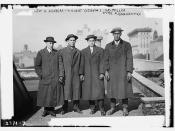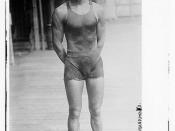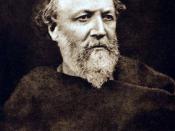"My Last Duchess"
Robert Browning's poem "My Last Duchess" is a splendid poem achieve within the format of the dramatic monologue, a poetic form in which there is only one speaker. Because there is only one speaker, we the reader must wonder carefully what the Duke is telling us, and we often have to read between the lines in order to keep an objective perspective on the what is happening in the poem. This paper will discuss how the use of the dramatic monologue makes the subject (the Duke) tell a story while, at the same time, unintentionally and ironically revealing unflattering characteristics about himself. Through diction and imagery Browning further reveals the character of the Duke.
The style and structure of this poem plays a significant role in the effect of the poem. "My Last Duchess" is written as a dramatic monologue: one speaker relates the entire poem as if to another person present with him.
This format suits this poem particularly well because the speaker, the Duke of Ferrara, comes across as being very controlling, especially in conversation. For example, he is jealous that he was not able to "monopolize" his former duchess' smiles for himself (Dupras 14). He also seems to control the actions of the person he is addressing with comments such as "Will't please you rise" (47) and "Nay, we'll go/Together down, sir" and his refusal to "stoop" out of respect to the count (53-54, 43).
Browning uses many grammatical techniques, including a simple rhyme scheme, enjambment, and caesura to convey various characteristics and qualities about the Duke and the situation. The rhyme scheme used is AA BB, which is very common to ballads and songs. This pattern is called a heroic verse because of the couplets rhyme in an iambic pentameter format. The icy...



Thorough Analysis of Browning's Poem
The Duke refused to stoop to correct the Duchess on what he perceived to be her inadequacies. The Duke is addressing the Count's envoy, not the Count. Still, you've done a good job of describing the Duke's jealous possessiveness.
12 out of 12 people found this comment useful.